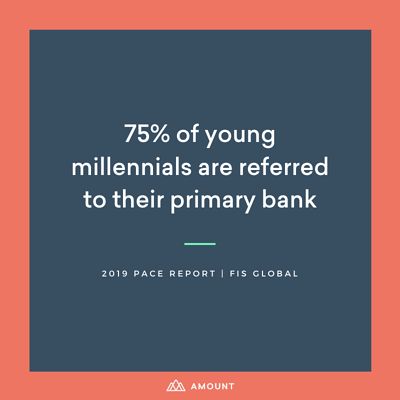Challengers Banks (also known as neobanks) have developed a strong market share by offering digital banking solutions that align with the modern consumer. The global pandemic has certainly increased the hype around these challenger banks, but do they really offer a better option than traditional banks for consumers? Does anyone really even care?
The rise of challenger banks
It is widely agreed that Security First Network Bank was the first of these digital challenger banks to go to market in the United States in 1995. It was subsequently sold off to RBC in 1998. The technology side of the bank was spun off into S1 Corporation that was later sold to ACI. This kicked off decades of challenger bank advancement.
Consumers have since been inundated with these challenger banks disrupting the traditional banking industry. Boasting offers of convenient online disaggregated services such as deposits and debit cards (Chime, Marcus), payments (Venmo, PayPal), credit cards (OlloCard, Mission Lane), consumer loans (Avant, Rocket Loans), point-of-sale financing, (Affirm, Klarna) and even aggregated services (Nerd Wallet and CreditKarma).
The natural evolution would be for these single product or service entries to expand their market share horizontally. For instance, lenders adding deposit accounts, credit cards adding consumer loans, and deposit accounts adding loans, etc. In other words, these challenger banks are on the road to becoming full-service banks without branches. And in the midst of a global pandemic, the branch model changed forever – even for traditional banks.
That begs the question… Do these neobanks really offer a better option for consumers than traditional banks?
Are traditional banks the best option?
An alternative theory to all of the hype behind the consumer preference for challenger banks is that the traditional banks that are willing to evolve and innovate their model will ultimately win this unproclaimed war.
Traditional banks have built brand reputation that neobanks simply cannot replicate anytime soon. If the behavior of my two children in their twenties is indicative of anything, it’s that even millennials tend to “trust” the banks of their parents more than the challengers, with the exception of Venmo and Zelle, which have already made alliances with traditional banks. According to the 2019 PACE banking study by FIS Global, “75% of young millennials are referred to their primary bank”.

Who do you think is the primary referrer? You guessed it: Mom and Dad. The same study goes on to assert that only 5 percent of the Baby Boomer generation use a direct challenger bank. Another key to that finding is the word “primary.” Are most young consumers using challenger banks just for secondary purposes? This will greatly limit these banks ability to cross-sell more services to these customers, an area where traditional banks can compete and win.
The need for omnichannel banking
What most traditional banks are missing is a digital, omnichannel customer experience that modern consumers are demanding. This is the Amazon/Uber generation – they are looking for a true omnichannel experience, not just a mobile app. In other words, they don’t want to follow up a mobile interaction with a visit to a branch, to their mailbox, or to their existing bank account to check for deposits. The global pandemic is accelerating the demand for these omnichannel experiences dramatically. According to Forbes, use of mobile banking has increased from 35% to 85% in the months since the pandemic started.
The need for digital fraud solutions
Many traditional banks are also behind the curve on fraud and ID verification solutions that are designed and optimized for a digital banking platform. Modern consumers don’t want to visit a branch, check their mailbox, and perform transactions to be successfully onboarded. Banks need to heed the call with a strong digital fraud mitigation strategy. However, the traditional banks have been late to the trend. The global pandemic is a major trigger point. These banks cannot afford to keep waiting.
The need for bank branches
It’s 2020, do banks still need branches to succeed?
Since 62% of Baby Boomers visit branches according to FIS, it would seem that banks still do need branches for the foreseeable future. Many banks still require their customers to engage in some sort of branch banking, but that can be changed. They will likely evolve from the transactional centers that we have come to expect to more of a consulting model that will help educate, inform, and guide customers in budgeting, investing, and buying homes. This will hopefully make banking more accessible to all and increase financial literacy.
Traditional banks aren’t immune to this neobank hype as many of them are creating neobanks of their own, like BankMobile from Customers Bank. To an industry veteran like myself, this doesn’t seem to make any sense. Why give up your biggest advantage of brand and trust in order to fight hand-to-hand against these challenger banks in their own backyard of online and mobile tech? Especially if most younger people are choosing banks based on their parents’ connection to those same traditional brands.
Traditional banks need to evolve
So what’s a traditional bank to do? Let’s review the argument. Banks have a big lead in the brand and trust department.
Many millennials are choosing their primary bank from a referral from a baby boomer who doesn’t use challenger banks.
The traditional banks simply don’t have the acumen and experience when it comes to a digital/mobile-first integrated experience and haven’t cracked the code of digital-only verifications to provide the seamless end-to-end experience that consumers are demanding.
So does the traditional bank dilute their brand and marketing budget and create its own neobank in search of the hype and large valuations? Or, at the end of the day, do traditional banks simply need to evolve–brand and all–into what is needed in financial services today: a trusted brand with an integrated omnichannel experience backed by digital-first ID verification.
“Traditional banks simply need to evolve into what is needed in financial services today: a trusted brand with an integrated omnichannel experience backed by digital-first ID verification.”
To paraphrase Joseph Schumpeter, a famed Austrian political economist, the essential fact of capitalism is a creative destruction where we must incessantly revolutionize the economic structure from within, destroying the old one and creating something new.

